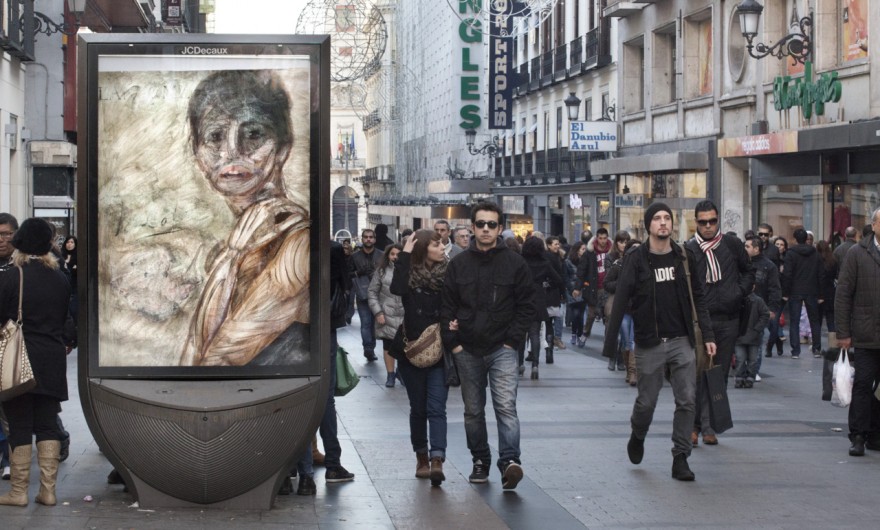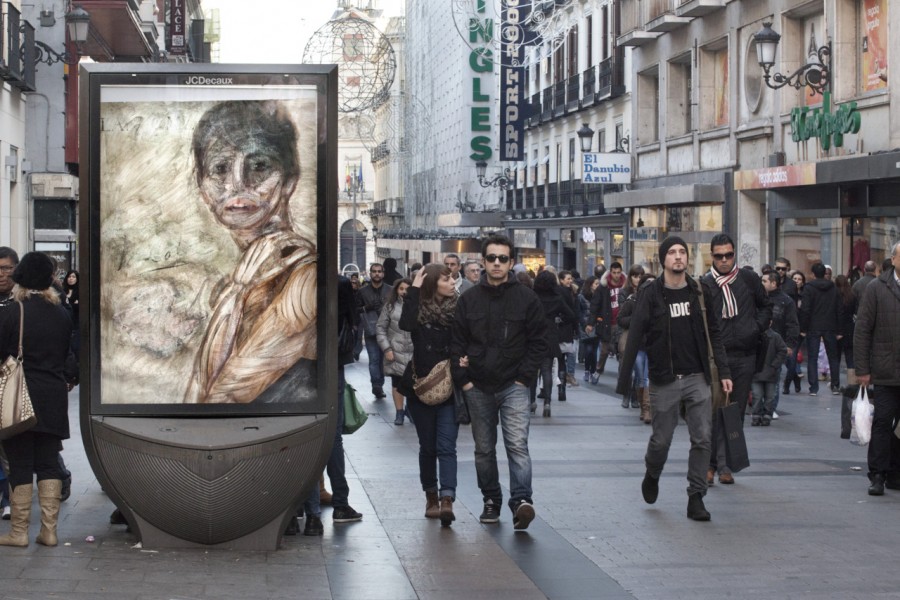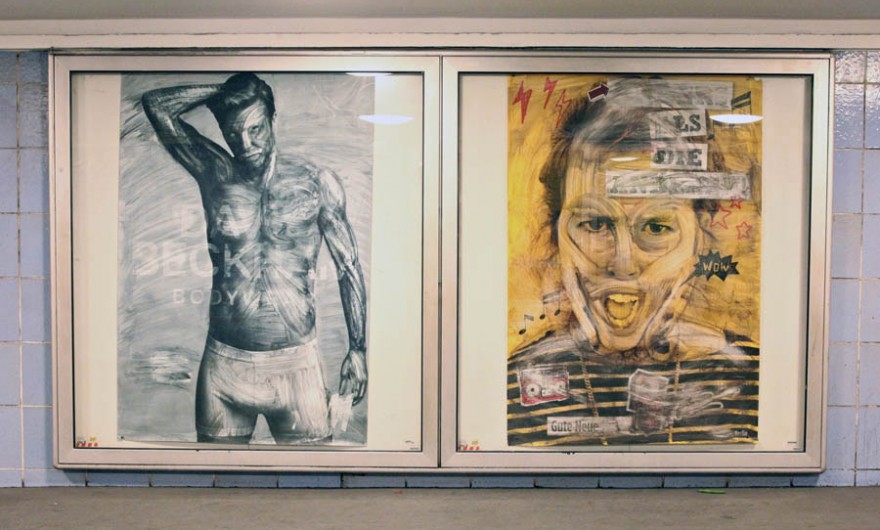By Nicole Chaput
Advertisements pitch an ideal of singularity that trick the consumer into thinking such ideal is viable. However, the apparatuses employed by the industry depersonalize to create a rigid net of sameness that allow producers to satisfy every shade of that uniformity and thus ensure profit. Artist Vermibus intervenes existing advertisements to comment on prevalence of depersonalization in the fashion industry. Vermibus violently distorts the preexisting manicured images to show that dehumanization is the only hope for singularity in this mechanically reproduced world.
We think about fashion even when we attempt to neglect it: the world becomes a catwalk where participation is no longer optional.
The fashion industry has penetrated our ideas of how we present our respective individual and how our everyday audience absorbs it. Rejecting trends and fashions involves a conscious awareness of it and a deliberate method of presentation that will advocate the repulsion this industry triggers.
Presentation or the embodiment of personality through consumerism seem to have the potential to capture and exhibit our interests. We expect this embodiment to happen because we have been taught by mass culture what qualities will personalize and single us out; but because this singularity is mechanically reproduced, it fails to manifest itself and becomes everything but.

Calculated devices are exercised by mass culture and advertising that homogenize and standardize individuals to abolish the possibility of singularity at all costs. This allows to broaden the consumer demographic and thus make sure everybody is buying: there is a product for everyone out there because consumers absorb and embody all the ideas pitched by advertisements. Singularity translates to someone whose wants and needs are not satisfied with the consumer goods offered by the market. Standardization is in the market’s best interest because it will systematically ensure consumption and profit.
These devices create the illusion of a world of possibilities and options, where there exists a top and bottom for the sophisticated punk girl with blue hair and one for the hippie stoner who is low key into fashion-among many others personas that are all created by the Culture Industry (movies, pop culture, etc.). The sophisticated punk girl with blue hair wants to be the sophisticated punk girl with blue hair that is advertised no matter how unknown this desire might be. This notion has to do with the manifestation of happiness in each advertisement and how the products that are sold are vehicles to pursue it. This is all a clever game of puppetry.
It would be reductive to appoint all personality traits to those advocated by advertisements but the extent of their influence is undeniable and alarming. The substance in a every person is constituted by numerous factors, but at least the way in which people present and embody their substance adjusts to this scheme and influence to a significant extent. Advertisements are mechanically reproduced and can be found literally everywhere: in historical monuments, inside our screens and in between train stops.
An important apparatus for this system is the standardization of beauty, where a person needs to have x, y, and z characteristics to advocate the ideal of beauty advertisements want to deliver. X, y and z are variables that change with time and depending on what the culture industry manifests as beautiful. Models are vehicles for this standardization of beauty and all drown in sameness. They all look the same with exceptions of eye, skin and hair color, they are all fabricated by the same mold. The people inside the world of advertisement seem to promote singularity, but are actually encapsulated by a two dimensional, mechanically reproduced and prefabricated persona, built to satisfy board members and their agendas. The singularity that is advertised is promised through consumption, even though it is false.

Artist Vermibus toys with this homogenized advertising world in his practice to actively comment on its concerning nature. Vermibus utilizes existing advertisements and then uses solvent and brushes to distort the image. Once the image has been intervened, the fashion advertisement is later reintroduced to its original context in its corresponding public setting. The technique employed by Vermibus can be read as an inverse gestural painting that mutates a plethora of sameness. The artist asserts that advertisements mask a person to substitute his or her identity for the one of the brand. When intervened, the advertisements of sanitized bodies adopt an aura of decay and resemble ghostly creatures. The artist insists that this mummy-esque aesthetic has more presence and that it enhances the potential of singularity. This statement is very powerful because it demonstrates that perfection is so standardized and mechanically reproduced that it has lost all its weight and significance. The promise of its existence everywhere allows for it to be taken as a light given where the only successful way of standing out is by alluding to death and shadows. Decay has become the antidote for singularity in the arena of flat spaces and brand names because it is the only possibility for differentia.
Verimus takes a reflexive and critical stance on this rotten world of uniformity and comments on its manipulative and dehumanizing agenda. He claims that models, the main vehicles for fashion advertisements, are depersonalized so that the one of the brand replaces their identity. This statement is ironic because many of these brands use the same models for their campaigns and are thus encouraging an even more limited and unvaried set of identities. The vehicles and apparatuses for advertisements are so unvaried and that is evidence for the lack of actual choices and possibilities that consumers actually have.
Vermibus rescues the depersonalized people inside advertisements by attacking them through a process of dehumanization. His images are no longer the banal and ephemeral background, but rather active criticisms of the images that exist everywhere over and over again. The artist invites the viewer to develop a critical perspective about this matter by challenging the expected horizon of billboards and commercials.












